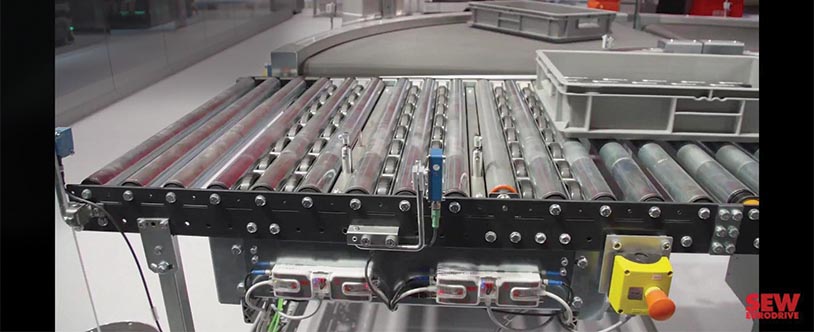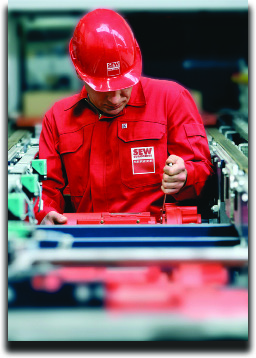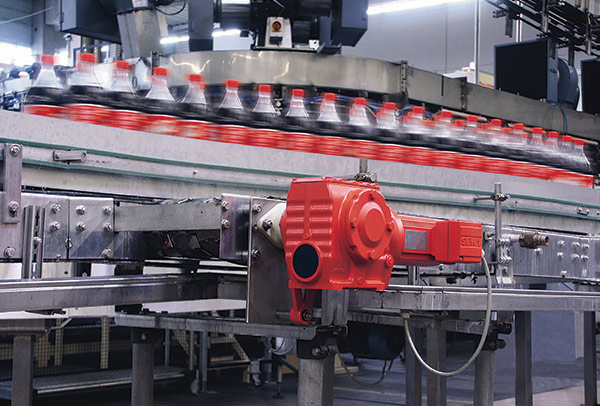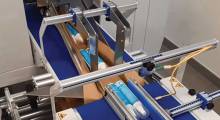The changing nature of distribution is driving innovation in the design of processes and equipment. Even conveyors, one of the most basic means of materials transport, are not immune to transformation.
Efforts to handle a wider variety of goods have produced systems capable of handling thin envelopes and poly bags, overcoming what was for decades a fundamental weakness of conveyors. The need for every watt of savings has produced the adoption of highly efficient drives, gears and motors with the intelligence to deliver only the power needed to get the job done.
To enhance worker safety in tight quarters, fast-paced environments or goods-to-person setups, conveyor componentry has prioritized low-decibel operation, reduced risk of pinch points and reliability to minimize maintenance interactions. Power transmission quickly adapted to unprecedented demand for uptime, speed and versatility.
“A lot of things are changing right now,” says Brad Gossard, vice president and general manager of Regal Beloit America. “Especially in the last two to three years, it’s reaching a crescendo.”
Gossard says warehousing and distribution solutions and parcel/post conveyor systems are particularly dynamic. Automation was previously used in these spaces to quickly move vast volumes of goods, but the focus has shifted to systems that deliberately move each individual item in a way specifically tailored to the item’s characteristics.
“A lot of intelligence is being built into handling, sorting and scanning each item,” Gossard says, “and it’s accelerating.”

Keeping operations shipshape
In his 39 years in the industry, Gossard has seen several paradigm shifts in the thinking around the servicing and maintenance of power transmission systems.
“I started in the stone age,” Gossard says, “when all maintenance was reactive.” Then, in the 1980s and 1990s, it shifted to a preventative approach, where technicians wandered endlessly to check the status of oil levels here or fittings there.
“That was great, but we have learned over time that preventative maintenance is not always precision maintenance,” he explains. “Studies show preventative maintenance is often followed by a surge in failures because it did more harm than good. For example, I grew up on a farm and before plowing in the spring, I’d go to every fitting and grease it. The problem is that I probably blew the seals out of half the bearings, leaving them unprotected.”
Expensive and risky, preventative maintenance has given way to predictive maintenance, where each service activity is anticipated and administered with precision. For example, a technician might be directed to apply only a half-ounce of grease to a given fitting, or skip it altogether.
Not long ago, the monitoring equipment and software required to coordinate predictive maintenance of conveyors and their power transmission components was prohibitively expensive. Just a few years ago, such tools would cost hundreds of thousands of dollars, and could only be justified in high-cost, critical applications when the cost of downtime reached hundreds of thousands or millions per day. Sensors, accelerometers, cameras and powerful software algorithms are now much more affordable, but another problem has arisen.
“It’s economical, but now you find people swimming in a mass of data,” Gossard says. “It’s like that commercial where the bank is being robbed. The manager says ‘well what are you going to do about it?’ ‘Nothing, I’m just here to tell you.’”
 From a service perspective, many are challenged to keep technicians up to speed with technologies, fault codes, troubleshooting techniques and repairs. However, considering the digital fluency of the next generation of technicians, this problem might have a relatively straightforward solution.
From a service perspective, many are challenged to keep technicians up to speed with technologies, fault codes, troubleshooting techniques and repairs. However, considering the digital fluency of the next generation of technicians, this problem might have a relatively straightforward solution.
“New technicians don’t want to sit in training all day,” Gossard says. “They say, ‘tell me what needs to be done, and I’ll go look it up myself.’ I believe that’s how it will go. A younger person in maintenance will pick up the eight tasks they’re supposed to do today and figure out the rest.”
For example, a monitoring system might determine from a vibration signature that a bearing will fail in three months. The control system already ordered the bearing, which took two months to manufacture and deliver. It appears on the technician’s task list, and he or she uses an iPad or augmented reality glasses to pull up how to remove bolts and the set screw, and follows prompts to replace.
Although in the early stages, augmented reality already shows promising signs of being a powerful materials handling equipment maintenance tool.
“I see that as how we’re going to get a step in productivity and reliability going forward,” Gossard says. “You can look at a piece of equipment and see energy consumption, the life left on the spindle, the bearing lifespan. You can see the performance of equipment just by walking through the plant. That type of automating is very powerful when you know an event is coming. You can see the future and then change it.”
What’s under the hood
Even better than knowing when a power transmission component will fail is prolonging that failure with more durable, reliable and intelligent components. The intelligence part centers on the component’s ability to only deliver power as needed, which can dramatically reduce energy consumption, wear and tear.
Variable frequency drives (VFD), as the name suggests, are capable of delivering a range of power, from fractions to multiples of average operating speed. According to Mike DeMeo, national electrical sales engineer for SEW Eurodrive, they are a key element to improving nearly all aspects of power transmission.
“We say every induction motor should have VFD, because it’s more cost effective,” DeMeo says. “There have recently been advances in the technology, and I expect more over the next couple of years.”
With decentralized control technology, a VFD/controller can be mounted directly on or near the motor and controlled by fieldbus technology. This type of installation allows for cost-effective wiring and installation, and allows for simpler zone speed control, feedback and easier, quicker service.
Consider a system startup at the beginning of a shift or following any downtime. Instead of starting across a loaded conveyor line with a 300% start current, which might be necessary simply to build momentum from a stop, a VFD can produce a slow acceleration up to speed. This reduces mechanical stress on the system, DeMeo says, and the same goes for gradual motor-controlled deceleration instead of slamming on the brakes.
Regulated speed control and contextual operation also help with noise levels in a facility.
“In recent months, less noise is really an issue with some of the larger companies,” DeMeo says. “There are more people working close to conveyors and power transmission components than before. In e-commerce, there is no tolerance for 80- to 90-decibel environments. Because decibels are logarithmic, the goal of 70 decibels is 1/10th the noise of 80. We now have to design for a certain decibel level and the farther below that, the better we look.”
DeMeo also highlights permanent magnet motors (PMM), which have fewer mechanical parts, no fans, produce less noise, and offer a smaller space to mount.
“Years ago you would never consider putting one of those on a conveyor, which was only expected to turn on and run,” he says. “Now you want to be able to start and stop, and when you start fully loaded you need more torque. Instead of a larger AC induction motor and a gigantic gearbox, you can now create the same capability with a PMM and smaller gearbox.”
Stoppages happen. Before the high-torque induction motors and gearboxes, some operations were compelled to remove all items from the conveyor to start back up. More compact, powerful and intelligent controls bypass this issue and offer greater contingency plans to get systems back online. In fact, DeMeo says even if main controls are down, which once crippled an entire system, smart motors can be operated independently, offering another layer of redundancy. With a full servo control, reliable torque data, speed and position can be obtained from the fieldbus data. This allows for preventive maintenance and maximum output.
With advances in motors and torque range, DeMeo says it’s possible to reduce how many different motors and gearboxes are needed throughout a system.
“If a motor can provide zero to 2,000 rpms and a constant torque range, the amount of required gearbox units on a system can be greatly reduced. This will then lower the required amount of gear motors to accommodate that range, and that’s a big savings and convenience,” DeMeo says. “And with modern technology, VFDs are very simple to use and install. It’s less work than wiring up a standard motor starter. Then, when you enter the realm of Ethernet to communicate wirelessly throughout a plant, it’s simpler than many think.”
Companies mentioned in this article:
Article topics










